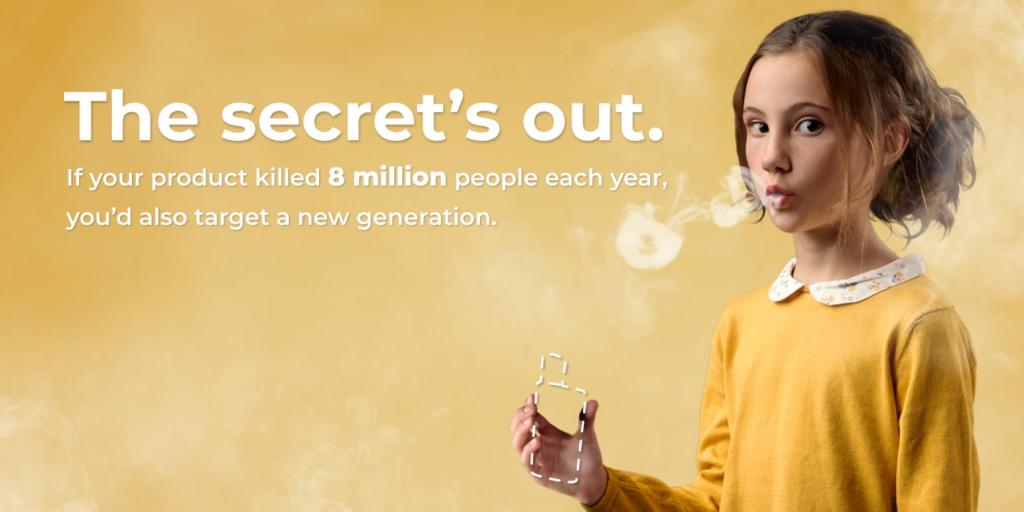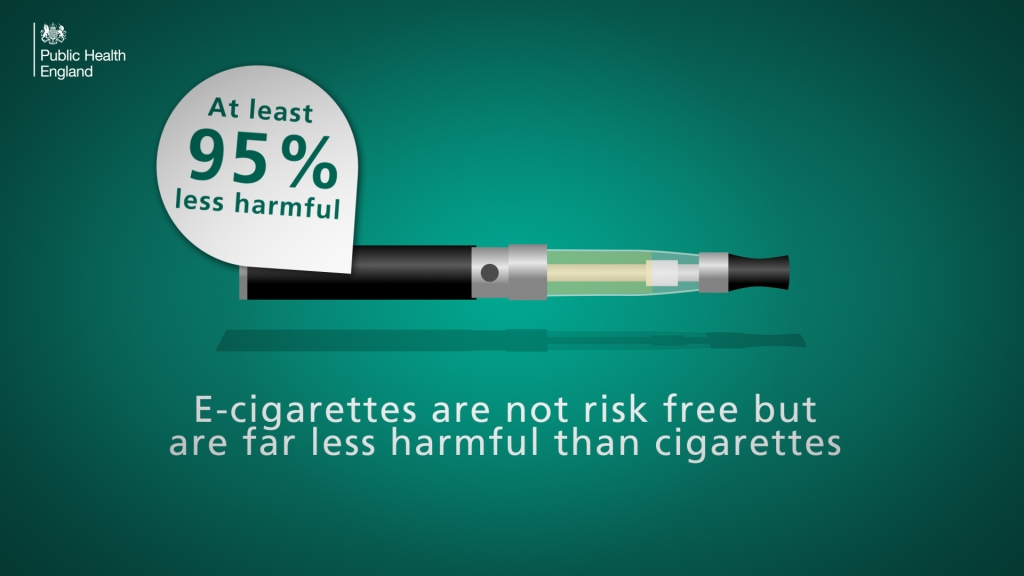My google search engine thinks Public Health England (PHE) is a vaping organisation.
“Vaping organisation UK”. You can try it yourself.
E-cigarettes lie at the centre of PHE’s tobacco control strategy, probably drawing attention and commitment away from alternative strategies for reducing smoking rates.
In September 2017, PHE encouraged smokers to “stop smoking with an e-cigarette”.
E-cigarette promotion also featured significantly in the 2019 NHS “Stoptober” campaign. “Try an e-cigarette”, urges Public Health England.
This page tells you all you need to know to get started.
Public Health England continues to defend its conclusion, based on the opinion of twelve experts, that “vaping is at least 95% less harmful than smoking” and that “more smokers [should be] encouraged to make the switch from smoking to vaping”.
(A commissioned report that repeats assurances about “95% safer” notes a number of significant limitations, including that “some of the studies [relied on] were tobacco industry funded”). See here, p 171.
Politicians are getting the message too.
The Independent British Vape Trade Association re-tweets Conservative Party MP Gareth Johnson who says:
“For the first time in my life, there is something that genuinely can help people to get off tobacco …the more people #vape, the fewer people smoke. We need to highlight that and celebrate it, and the Government should take that forward.”
How, exactly?
Through preferential treatment for the liquid nicotine industry, that’s how. Bill Grant MP, a member of the industry-friendly Committee that inquired into e-cigarettes in 2018, tells Hansard:
“There should be a shift to a more risk-proportionate regulatory environment; where regulations, advertising rules and tax duties reflect the evidence of the relative harms of the various e-cigarette and tobacco products available.”
Pretty much what the vaping industry itself argued, when it fronted the House of Commons Committee.
What about winding back smoke-free laws, so that people with nicotine addiction can vape wherever and whenever they please?
In a document called “Use of e-cigarettes in public places and workplaces: advice to inform evidence-based policy making”, PHE urges organisations to exempt vaping from their smokefree policies.
According to PHE, “It is never acceptable to require vapers to share the same outdoor space with smokers”.
“[A] more enabling approach may be appropriate in relation to vaping to make it an easier choice than smoking. In particular, vapers should not be required to use the same space as smokers, as this could undermine their ability to quit smoking and stay smokefree” (p 9).
And since vapers require more frequent top-ups to maintain their “desired blood plasma nicotine level”, these differences should also be taken into account.
Two camps
Global tobacco control is now split into two camps, divided – irrevocably – by ideology.
Boiled down, traditional tobacco control advocates believe that the best way to deal with the tobacco snake is to cut off its head: to support smokers to quit smoking forever by conquering nicotine addiction.
Deal with addiction, and you’ll eliminate the ability of the tobacco industry to maim and kill – not to mention suck a lifetime’s wealth out of their predominantly socio-economically disadvantaged customers.
Tobacco harm reductionists, by contrast, have all but given up encouraging nicotine abstinence and seem largely focused on encouraging smokers to migrate to recreational nicotine products that will (hopefully) cause less damage to health over the long term.
For harm reductionists, the rhetoric of “saving lives” is powerful. But under the surface, there’s a deadly serious economic contest as the nicotine and tobacco industries work the corridors of power.
As more public health leaders come out in favour of vaping, there’s a once-in-a-generation opportunity to re-normalise nicotine addiction and rescue recreational nicotine use from the poor image of smoking.
[US advertisement for Blu, an e-cigarette brand owned by Imperial Brands]
“No one likes a quitter, so make the switch today”
The e-cigarette industry is delighted with Public Health England’s support for e-cigarettes, seamlessly blending PHE messages into their marketing strategies, as illustrated here.
The UK Vape Industry Association, whose members include British American Tobacco, Philip Morris and Japan Tobacco International, feature Public Health England’s 95% safer claim in their advertising for VAPRIL – Vaping Awareness Month.
In one undercover investigation, 87% of vape shops in England sold e-cigarettes to people who were neither current nor former smokers, violating the Code of Conduct of the Independent British Vape Trade Association, a rival vape trade organisation. You can watch the footage here.
But it’s not as if these industry codes actually mean anything.
And little point in government taking the high ground when their strategy for alcoholism is to promote light beer.
The Independent British Vape Trade Association, based in “the heart of Westminster” states that “The UK has remained firm in its belief that e-cigarettes should be promoted as an effective tobacco cessation aid”.
IBVTA members include “HealthySmoker”, “Puff in Peace”, “Sweet Cloud”, “Vlad the Inhaler Ltd” and “Liberty Flights”, as in “Liberty Flights Limited is working with the addiction centre at a leading London University on a study funded by a cancer charity, supporting clients who access drug and alcohol services. The location for the study is an NHS Foundation Trust which provides care and treatment for people with mental health problems.”
Liberty Flights Ltd is supplying vaping products and advice for a quit-smoking study.
Essex Vape Company is partnering with a local authority public health department and an NHS Foundation Trust on a smoking cessation program for pregnant women: a voucher scheme helps participants to access the company’s vaping starter kits.
Totally Wicked (“the world’s premier vaping retailer”) delivered “e-cigarette training” to staff involved in a quit smoking program funded by a city council, and provided free e-cigarettes and e-liquids to 1000 smokers.
One gets the impression that the vaping industry has a spring in its step in England, partnering with government, handing out free vapes.
Promoting nicotine has become the Lord’s work.
Although tank systems remain the most popular vaping products in the UK (77% in 2019, down from 83% a year earlier), branded, re-chargeable products with pre-filled cartridges are on the rise (see here, pp 1, 13).
The leading UK e-cigarette brands are Vype (18%) [British American Tobacco], Blu (15%) [Imperial Brands], Logic (11%) [Japan Tobacco], and JUUL [the dominant US brand but a new entrant in the UK market], with 6%.
The reality is that heated tobacco products, and e-cigarettes, are increasingly owned and marketed by transnational tobacco companies – the folks who trade in death on an industrial scale. See for example here and here.
Not everyone shares the excitement of PHE’s approach.
Professor Martin McKee from the London School of Tropical Medicine states that PHE “seems to be doing everything it can to promote e-cigarettes”, exposing a new generation to poorly studied chemicals.
The prominence given to PHE’s “95% safer” claim, by the e-cigarette industry, has led to an “escalation of commitment” in which “evidence that supports the position being held is promoted, whereas that which challenges it is dismissed”.
Professor Jeffrey Gotts, lead author of a recent study in BMJ (see here) told the New York Times “People are conducting a huge experiment on themselves about what kind of lung disease you can produce from all these different chemicals that you’re putting into the lung. And the bulk of the evidence is increasingly that these devices have new and unpredicted toxicity”.
Children, adolescents and teenagers tend not to feature much when tobacco harm reductionists open up about their preference for relaxing controls on e-cigarettes.
After all, they’re not supposed to be using these products, are they?
And yet, every year, arriving in Washington DC to teach, I’ve watched youth vaping rates rise. From 2011 to 2015, use of e-cigarettes among high school students rose by 900%: from 1.5% to 16%.
That’s the power of the “consumer led approach” to e-cigarette regulation that the nicotine industry and its public health followers now advocate.
It’s a fascinating example of regulatory capture. Without the regulation.





Leave a comment